 Facebook
Facebook
 X
X
 Instagram
Instagram
 TikTok
TikTok
 Youtube
Youtube
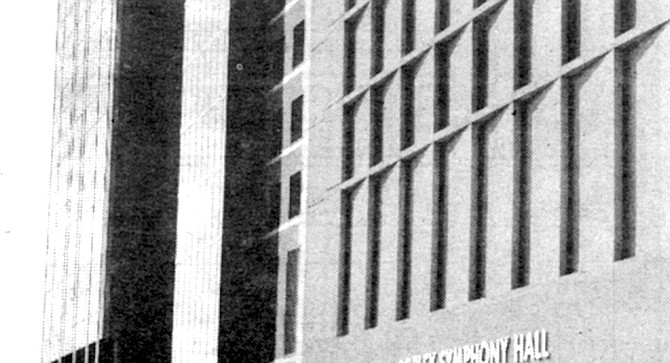
A bad architectural reputation is hard to undo, and stucco has one of the worst. In the 1960s, California songwriter Malvina Reynolds labeled it “ticky-tacky” when she wrote of “little boxes” (the zero-lot-line houses of South San Francisco). San Diegans, with the rest of the West, took to calling their housing tracts stucco wastelands after World War II, when inexpensive, noncombustible, low-maintenance, weatherproof stucco pushed all other building materials off the local scene. After designers and builders roll up their plans and leave, it is natural to fault this ubiquitous material for the unrelenting sameness of our merchant-built housing: creeping characterlessness.
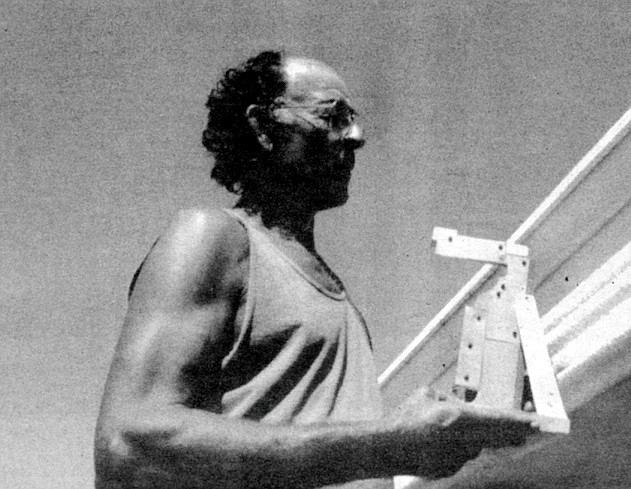
Yet whispering in history, and occasionally in the present, are the voices of San Diego’s most gifted architects, who consider stucco to be a beautiful material. Is stucco in the process of redeeming itself, as some believe? Are San Diego’s architects finally understanding and making the best use of an ancient material that worked well for the Mayas, built much of Rome, and has seen widespread use on many of America’s finest houses and small-scale commercial buildings since the early 1800s?
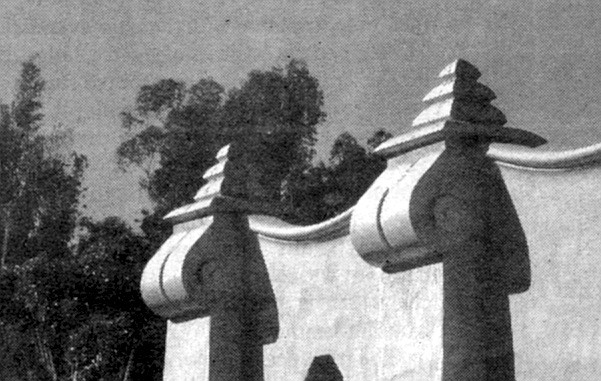
The popular use of stucco in America traces its origin to Benjamin Henry Latrobe, appointed by Thomas Jefferson as Surveyor of Public Buildings of the United States in 1803. He designed several important stucco buildings and houses, including the stucco-clad St. John’s Church in Washington, D.C. (1816). About a decade later, in San Diego, builders of important structures like Casa de Estudillo (1829) in Old Town encased adobe walls in plaster, a form of stuccoing. Sophisticated Hopi and Anasazi pueblo builders of the Southwest — especially at sites like Acoma’s Sky City, Taos, and Canyon de Chelly—predated all colonization-period techniques, but their material was more of a mud slip than a lime-based stucco.

The term stucco (as defined by National Park Service historic preservation experts) refers to “a type of exterior plaster applied as a two- or three-part coating directly onto masonry or applied over wood or metal lath to a log or wood frame structure.” Since the 19th Century, it has been used as the desired, final surface, not a sacrificial coating as some building restorers mistakenly believe when they rip it off to reveal stone, brick, or logs that were always meant to be covered up. At times stucco was even used to enhance an owner’s social status, covering cruder materials like rubblestone or fieldstone.
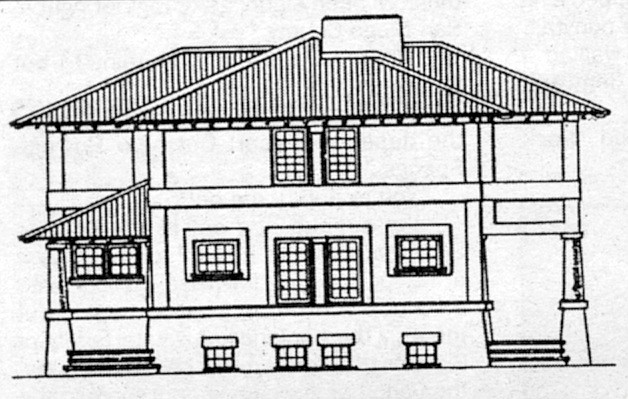
Stucco first consisted of hydrated or slaked lime, water, and sand, with straw or animal hair — even animal blood and urine — added as a binder. Natural cements were discovered in the United States in the 1820s and were used in stucco, but it remained a material that was applied over something substantial, like masonry. With the invention of Portland cement in 1871, stucco became more versatile. The Portland material is a very fine crushed and “cooked” cement dust that acts like a mineral glue when mixed with water and sand. It renders the mix jellylike and then crystalline. As it dries, all parts of the mixture knit firmly. The jelly consistency allowed workers to apply stucco directly over wood strips (lath) or a special metal screen designed to hold it vertically in place (metal lath). Another simple way to define stucco is to call it concrete hanging on a wall. As metal lath became popular, stucco ceased to be a veneer.
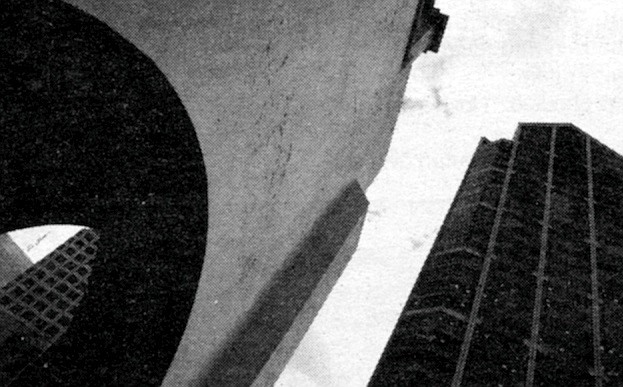
By about 1870, the fate of small-scale architecture in the wood-rich West was clear. Houses would be balloon frame or stick built with lightweight lumber frames. Because it was also clear that fire was a real hazard in most parts of California, stucco became a more practical and popular siding material than wood. And, unlike wood, the materials to make stucco are nearly inexhaustible.
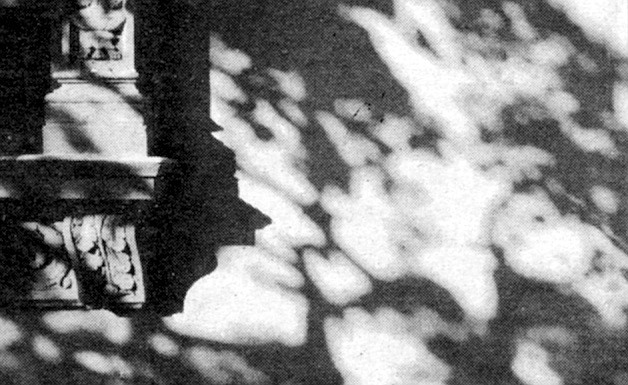
Designers of the Craftsman era in architecture (exemplified by the circa-1910 bungalow), with their preoccupation with the artist as craftsman, worshipped the qualities of stucco. Early articles in The Craftsman magazine touted stucco with poetic reverence: “The home with plastered or stuccoed exterior — the kind that people of Shakespeare’s day were wont to live in — is the type of construction that fills this (fire resistance] requirement. There is an aesthetic quality, too, about its walls. The gray stucco is always in harmony with Nature’s colors and never loses its charm. It ages gracefully, growing more mellow with the weathering of years.”
The romance of history was a strong reason for stucco’s popularity. Early Westerners understood and lionized their Spanish heritage. Again from The Craftsman: “Only the Spaniard had the feeling for beauty traceable in those massive structures raised out of the bare earth in noble stretch and curve, below their mother-mountains.” These exhalations of enchantment over the Spanish-Moorish stucco form continued with California buildings located at several world’s fairs and in the ultimate statement, San Diego’s own 1915 Panama-California Exposition in Balboa Park, masterpieces in stucco and plaster ornamentation.
Turn-of-the-century San Diego architects Irving Gill, Richard Requa, Frank Mead, Hazel Waterman, Carleton Winslow, William Templeton Johnson, Lillian Rice, and many others embraced stucco for its ability to make a building a composed whole. The grayness of untinted, unpainted concrete was highly desirable, “suggesting rest and quiet set against a green background...or Southern California’s unremitting sunlight.” Sometimes a slight mixture of lampblack was added to the mix to make the concrete gray even more pronounced.
Gill was the master at controlling a Craftsman ideal of the house as spare, aesthetic backdrop for nature. As he is quoted in The Craftsman, “[Stucco] not only blends beautifully with the colors all around it but is especially effective when partially veiled by the lacy foliage of pepper-trees planted near the house.” Frank Mead, speaking of his work (with Irving Gill) on the 1907 Wheeler J. Bailey House (“Hilero”) overlooking La Jolla Shores, said, “A house should be an absolute expression of the soil. It should be an intrinsic part of the landscape, a harmonious note in the whole geographical song.... It should look as if it had grown where it is....”
Soon architects were exploring color and texture in stucco. In the Bay Area, Bernard Maybeck experimented with burlap sacks dipped in concrete and slapped like shingles to a house’s exterior walls. Maybeck was also a noted colorist (witness his Palace of Fine Arts in San Francisco), and he and other architects in California began trying to achieve the tawny or biscuit colors of California’s hills seen from a distance and the golden cliffs of La Jolla and Corona Del Mar. One of their methods was to add 4 pounds of dry yellow ocher to 100 pounds of Portland cement mortar containing two parts of sand to one of cement.
They also applied color to wet stucco to be “free of the painty look so often seen in colored walls...making the observer question the material.” This echoed Michelangelo’s buon fresco method used in the Sistine Chapel and “guarantees practicability and permanence.” Architects, plasterers, even homeowners tried everything from brooms to eucalyptus branches to dab, switch, beat, and stipple color on the wet stucco walls to achieve the desired effect.
It wasn’t long before a “pebble dash” finish was also perfected. Plasterers threw pebbles, river gravel, or other crushed stone into wet concrete walls, leaving the rock partly exposed. Examples of this style, now upwards of 90 years old, can still be seen on some house walls in San Diego. One example is Brockton Villa, now the Pannikin cafe overlooking La Jolla Cove.
Two factors helped bring this artistic use of stucco to a halt: modernism, with its emphasis on simple, unbroken planes, and the invention of the stucco “gun,” a machine process for blowing stucco onto walls that has been popular for the last 30 years.
“Some of us held out,” said Ed Pollareno, a San Diego plasterer for almost 40 years who recently retired and lives in Cardiff-by-the-Sea in a stucco house. “For a while I used the gun, but I always went back to doing it all by hand. A scratch coat first, the second coat or brown coat, and the last one, what we call the color coat.”
Pollareno’s largest residential jobs were for two of San Diego’s best-known developers. Both built massive houses in Rancho Santa Fe and demanded the best, and that meant hand-plastering for their stucco walls. Pollareno applied 75 tons of material to the Summers house alone, every ounce of it lifted by hod and trowel. The appeal of this method, according to Pollareno, is its accuracy.
“When you’re behind a gun, you just spray it on,” he said, standing in the front yard of his home, beneath a new decorative cornice he was applying to his one-story, flat-roofed house. “Then the fellas try to smooth it out, but it’s hard to get it right. When the sun hits it, it looks awful. By hand everything is straight. No bumps.”
But in the end, Pollareno felt he couldn’t compete. “I don’t want to work for ten bucks an hour after 37 years,” he said, his arms like twisted newspapers brown from years in the sun, his bald head a deeply tanned egg in a nest of gray hair. “Now I do some stucco work for some of the American neighbors when I’m at my retirement place 30 miles south of San Felipe. The Mexican plasterers appreciate hand work, but they do it a little different than we do. They don’t use a hod, and they cut the ‘mud’ on a wall with a big stick. I have to admit that I took a machine down there once to spray a wall and they were amazed!”
Pollareno’s skill also extends to the use of hand-pulled shapes he creates through the use of custom forms, galvanized metal knives in a handheld frame that are used to cut and shape a running cornice detail or multi-angled reveal around a window or door. This kind of detail is impossible with guns, which is one of the reasons stucco began to seem so ordinary, so featureless, on merchant-built houses. Only recently have certain simple reveals and “reliefs” begun to crop up on tract houses, usually as raised bands of stucco around windows. Some recent house plans appear to have been inspired by Craftsman-era plan books and magazines, as can be seen in an illustration for a 1906 two-story “cottage” (Cottage No. 3, see illustration). Houses that look much like this can be seen at the Mt. Woodson development in Ramona, and another Craftsman-style house recently was voted the people’s choice at a builders’ Poway showcase display.
What modern architects still seem to ignore is the two-story stucco house’s visual requirement of having its corners and floor levels defined. In Cottage No. 3, the 90-year-old design has a solidity and dignity unmatched by any of the modern two-story boxes now teetering atop man-made terraces beside Interstates 5 and 15. All it needs is a garage and some floor plan revisions to be built today.
Some modern San Diego architects and building designers known for their custom houses are celebrating stucco in innovative as well as time-honored ways.
“I use it, gobs of it!” says Wallace Cunningham, known for his radical, sculptural houses like “Aperture,” the pyramidal house overlooking San Elijo Lagoon in Cardiff-by-the-Sea and the narrow house on Prospect Street where numerous tall rectangular forms seem to slip off each other.
He is collaborating with Mexican architect Ricardo Legoretta on a guesthouse in Rancho Santa Fe that promises to be a spare stucco statement (Legoretta is best known in San Diego for his new South Chula Vista Library, where a strong use of color caused local controversy). Cunningham’s opinions on stucco range from passion — over buildings like the San Diego Museum of Fine Art in Balboa Park, “all the old theaters,” and Requa’s A.H. Sweet House at 435 West Spruce Street, Bankers Hill (private) — to disgust over downtown’s “bad-stucco skyscraper,” Symphony Towers.
“Requa believed in simplicity and a crescendo of ornament,” said Cunningham. “Whereas with Gill, everything was down, down, down, less, less, less. Ornament might make a comeback on stucco buildings in San Diego. There are glimmers, but most architects aren’t talented enough to do it or it’s too expensive. Done wrong, ornament is like architectural breast implants.”
Lillian Rice’s early Rancho Santa Fe work was known for its “loose and quirky” stucco work. “They were having fun,” observes Cunningham. “Stucco can have a beautiful depth, the way it weathers in and out. It’s a living thing.
“It also stains, which causes problems nowadays. If you put a copper gutter on a building and it stains the stucco, clients think you’re insane if you try to explain that it can be a desirable effect. People want their houses to be perfect.”
Designer Ken Ronchetti, known for his powerful, contemporary (but still Spanish-Moorish-influenced) work on buildings ranging from the Nissan Design Center to San Diego houses whose walls appear to be many feet thick, also laments San Diegans’ desire for perfection.
“The same people who travel to Europe and take pictures of all the cracks and the peeling paint come home and everything has to be brand-new, out of the box. I can’t come to grips with it. I did it myself when I coated my stucco house with an elastic material...yet I’ve also argued with clients about the values of a dirt floor — or the beautiful white sand floor I saw in a restaurant south of Toolum. We all get a little Puritanical.”
Ronchetti believes that the edge where stucco meets sky is critical to a wall’s aesthetic success or failure.
“Photographer Julius Schulman once told me that my houses had ‘dreamy’ edges that ‘fell off in the late afternoon light so that it became very hard to distinguish where edge joins sky. Since then I’ve been very conscious of how edge light creeps over a wall and down the other side.”
To achieve the light’s gentle slide or roll, Ronchetti rounds off the top of every stuccoed outdoor patio wall or parapet (and his houses have many of them). His plans even specify the correct radius of the arc. These rolled tops also prevent water from sitting atop a wall and limit damaging ultraviolet rays that strike the wall’s finish coat directly rather than at a glancing angle. The proper angle can increase the life of paint or elastomeric compounds engineered to cover concrete, even hide cracks, at a spot where they usually fail first.
Ronchetti also plays with the effects of light, and shadow by texturing stucco but avoids any heavy trowel work that has a swirled, circular look. “That’s cover-up stuff,” he says. “Overdecorated and lathered up. The kind you see on Spanish layer-cake houses. It’s an expedient measure of hiding very bad framing or very bad walls.” Instead he’s experimented with putting heavier sand in the concrete mix then drawing it straight down with a wooden float. At one house he used a garden rake to groove the stucco vertically.
Whatever the texture or color, Ronchetti echoes Gill when he says, “A palm shadow on a stucco wall has powerful emotional qualities. It recalls sunny times and all the convivial events that have happened between you and friends. It’s one of my favorite things to look at on the planet.”


A bad architectural reputation is hard to undo, and stucco has one of the worst. In the 1960s, California songwriter Malvina Reynolds labeled it “ticky-tacky” when she wrote of “little boxes” (the zero-lot-line houses of South San Francisco). San Diegans, with the rest of the West, took to calling their housing tracts stucco wastelands after World War II, when inexpensive, noncombustible, low-maintenance, weatherproof stucco pushed all other building materials off the local scene. After designers and builders roll up their plans and leave, it is natural to fault this ubiquitous material for the unrelenting sameness of our merchant-built housing: creeping characterlessness.

Yet whispering in history, and occasionally in the present, are the voices of San Diego’s most gifted architects, who consider stucco to be a beautiful material. Is stucco in the process of redeeming itself, as some believe? Are San Diego’s architects finally understanding and making the best use of an ancient material that worked well for the Mayas, built much of Rome, and has seen widespread use on many of America’s finest houses and small-scale commercial buildings since the early 1800s?

The popular use of stucco in America traces its origin to Benjamin Henry Latrobe, appointed by Thomas Jefferson as Surveyor of Public Buildings of the United States in 1803. He designed several important stucco buildings and houses, including the stucco-clad St. John’s Church in Washington, D.C. (1816). About a decade later, in San Diego, builders of important structures like Casa de Estudillo (1829) in Old Town encased adobe walls in plaster, a form of stuccoing. Sophisticated Hopi and Anasazi pueblo builders of the Southwest — especially at sites like Acoma’s Sky City, Taos, and Canyon de Chelly—predated all colonization-period techniques, but their material was more of a mud slip than a lime-based stucco.

The term stucco (as defined by National Park Service historic preservation experts) refers to “a type of exterior plaster applied as a two- or three-part coating directly onto masonry or applied over wood or metal lath to a log or wood frame structure.” Since the 19th Century, it has been used as the desired, final surface, not a sacrificial coating as some building restorers mistakenly believe when they rip it off to reveal stone, brick, or logs that were always meant to be covered up. At times stucco was even used to enhance an owner’s social status, covering cruder materials like rubblestone or fieldstone.

Stucco first consisted of hydrated or slaked lime, water, and sand, with straw or animal hair — even animal blood and urine — added as a binder. Natural cements were discovered in the United States in the 1820s and were used in stucco, but it remained a material that was applied over something substantial, like masonry. With the invention of Portland cement in 1871, stucco became more versatile. The Portland material is a very fine crushed and “cooked” cement dust that acts like a mineral glue when mixed with water and sand. It renders the mix jellylike and then crystalline. As it dries, all parts of the mixture knit firmly. The jelly consistency allowed workers to apply stucco directly over wood strips (lath) or a special metal screen designed to hold it vertically in place (metal lath). Another simple way to define stucco is to call it concrete hanging on a wall. As metal lath became popular, stucco ceased to be a veneer.

By about 1870, the fate of small-scale architecture in the wood-rich West was clear. Houses would be balloon frame or stick built with lightweight lumber frames. Because it was also clear that fire was a real hazard in most parts of California, stucco became a more practical and popular siding material than wood. And, unlike wood, the materials to make stucco are nearly inexhaustible.

Designers of the Craftsman era in architecture (exemplified by the circa-1910 bungalow), with their preoccupation with the artist as craftsman, worshipped the qualities of stucco. Early articles in The Craftsman magazine touted stucco with poetic reverence: “The home with plastered or stuccoed exterior — the kind that people of Shakespeare’s day were wont to live in — is the type of construction that fills this (fire resistance] requirement. There is an aesthetic quality, too, about its walls. The gray stucco is always in harmony with Nature’s colors and never loses its charm. It ages gracefully, growing more mellow with the weathering of years.”
The romance of history was a strong reason for stucco’s popularity. Early Westerners understood and lionized their Spanish heritage. Again from The Craftsman: “Only the Spaniard had the feeling for beauty traceable in those massive structures raised out of the bare earth in noble stretch and curve, below their mother-mountains.” These exhalations of enchantment over the Spanish-Moorish stucco form continued with California buildings located at several world’s fairs and in the ultimate statement, San Diego’s own 1915 Panama-California Exposition in Balboa Park, masterpieces in stucco and plaster ornamentation.
Turn-of-the-century San Diego architects Irving Gill, Richard Requa, Frank Mead, Hazel Waterman, Carleton Winslow, William Templeton Johnson, Lillian Rice, and many others embraced stucco for its ability to make a building a composed whole. The grayness of untinted, unpainted concrete was highly desirable, “suggesting rest and quiet set against a green background...or Southern California’s unremitting sunlight.” Sometimes a slight mixture of lampblack was added to the mix to make the concrete gray even more pronounced.
Gill was the master at controlling a Craftsman ideal of the house as spare, aesthetic backdrop for nature. As he is quoted in The Craftsman, “[Stucco] not only blends beautifully with the colors all around it but is especially effective when partially veiled by the lacy foliage of pepper-trees planted near the house.” Frank Mead, speaking of his work (with Irving Gill) on the 1907 Wheeler J. Bailey House (“Hilero”) overlooking La Jolla Shores, said, “A house should be an absolute expression of the soil. It should be an intrinsic part of the landscape, a harmonious note in the whole geographical song.... It should look as if it had grown where it is....”
Soon architects were exploring color and texture in stucco. In the Bay Area, Bernard Maybeck experimented with burlap sacks dipped in concrete and slapped like shingles to a house’s exterior walls. Maybeck was also a noted colorist (witness his Palace of Fine Arts in San Francisco), and he and other architects in California began trying to achieve the tawny or biscuit colors of California’s hills seen from a distance and the golden cliffs of La Jolla and Corona Del Mar. One of their methods was to add 4 pounds of dry yellow ocher to 100 pounds of Portland cement mortar containing two parts of sand to one of cement.
They also applied color to wet stucco to be “free of the painty look so often seen in colored walls...making the observer question the material.” This echoed Michelangelo’s buon fresco method used in the Sistine Chapel and “guarantees practicability and permanence.” Architects, plasterers, even homeowners tried everything from brooms to eucalyptus branches to dab, switch, beat, and stipple color on the wet stucco walls to achieve the desired effect.
It wasn’t long before a “pebble dash” finish was also perfected. Plasterers threw pebbles, river gravel, or other crushed stone into wet concrete walls, leaving the rock partly exposed. Examples of this style, now upwards of 90 years old, can still be seen on some house walls in San Diego. One example is Brockton Villa, now the Pannikin cafe overlooking La Jolla Cove.
Two factors helped bring this artistic use of stucco to a halt: modernism, with its emphasis on simple, unbroken planes, and the invention of the stucco “gun,” a machine process for blowing stucco onto walls that has been popular for the last 30 years.
“Some of us held out,” said Ed Pollareno, a San Diego plasterer for almost 40 years who recently retired and lives in Cardiff-by-the-Sea in a stucco house. “For a while I used the gun, but I always went back to doing it all by hand. A scratch coat first, the second coat or brown coat, and the last one, what we call the color coat.”
Pollareno’s largest residential jobs were for two of San Diego’s best-known developers. Both built massive houses in Rancho Santa Fe and demanded the best, and that meant hand-plastering for their stucco walls. Pollareno applied 75 tons of material to the Summers house alone, every ounce of it lifted by hod and trowel. The appeal of this method, according to Pollareno, is its accuracy.
“When you’re behind a gun, you just spray it on,” he said, standing in the front yard of his home, beneath a new decorative cornice he was applying to his one-story, flat-roofed house. “Then the fellas try to smooth it out, but it’s hard to get it right. When the sun hits it, it looks awful. By hand everything is straight. No bumps.”
But in the end, Pollareno felt he couldn’t compete. “I don’t want to work for ten bucks an hour after 37 years,” he said, his arms like twisted newspapers brown from years in the sun, his bald head a deeply tanned egg in a nest of gray hair. “Now I do some stucco work for some of the American neighbors when I’m at my retirement place 30 miles south of San Felipe. The Mexican plasterers appreciate hand work, but they do it a little different than we do. They don’t use a hod, and they cut the ‘mud’ on a wall with a big stick. I have to admit that I took a machine down there once to spray a wall and they were amazed!”
Pollareno’s skill also extends to the use of hand-pulled shapes he creates through the use of custom forms, galvanized metal knives in a handheld frame that are used to cut and shape a running cornice detail or multi-angled reveal around a window or door. This kind of detail is impossible with guns, which is one of the reasons stucco began to seem so ordinary, so featureless, on merchant-built houses. Only recently have certain simple reveals and “reliefs” begun to crop up on tract houses, usually as raised bands of stucco around windows. Some recent house plans appear to have been inspired by Craftsman-era plan books and magazines, as can be seen in an illustration for a 1906 two-story “cottage” (Cottage No. 3, see illustration). Houses that look much like this can be seen at the Mt. Woodson development in Ramona, and another Craftsman-style house recently was voted the people’s choice at a builders’ Poway showcase display.
What modern architects still seem to ignore is the two-story stucco house’s visual requirement of having its corners and floor levels defined. In Cottage No. 3, the 90-year-old design has a solidity and dignity unmatched by any of the modern two-story boxes now teetering atop man-made terraces beside Interstates 5 and 15. All it needs is a garage and some floor plan revisions to be built today.
Some modern San Diego architects and building designers known for their custom houses are celebrating stucco in innovative as well as time-honored ways.
“I use it, gobs of it!” says Wallace Cunningham, known for his radical, sculptural houses like “Aperture,” the pyramidal house overlooking San Elijo Lagoon in Cardiff-by-the-Sea and the narrow house on Prospect Street where numerous tall rectangular forms seem to slip off each other.
He is collaborating with Mexican architect Ricardo Legoretta on a guesthouse in Rancho Santa Fe that promises to be a spare stucco statement (Legoretta is best known in San Diego for his new South Chula Vista Library, where a strong use of color caused local controversy). Cunningham’s opinions on stucco range from passion — over buildings like the San Diego Museum of Fine Art in Balboa Park, “all the old theaters,” and Requa’s A.H. Sweet House at 435 West Spruce Street, Bankers Hill (private) — to disgust over downtown’s “bad-stucco skyscraper,” Symphony Towers.
“Requa believed in simplicity and a crescendo of ornament,” said Cunningham. “Whereas with Gill, everything was down, down, down, less, less, less. Ornament might make a comeback on stucco buildings in San Diego. There are glimmers, but most architects aren’t talented enough to do it or it’s too expensive. Done wrong, ornament is like architectural breast implants.”
Lillian Rice’s early Rancho Santa Fe work was known for its “loose and quirky” stucco work. “They were having fun,” observes Cunningham. “Stucco can have a beautiful depth, the way it weathers in and out. It’s a living thing.
“It also stains, which causes problems nowadays. If you put a copper gutter on a building and it stains the stucco, clients think you’re insane if you try to explain that it can be a desirable effect. People want their houses to be perfect.”
Designer Ken Ronchetti, known for his powerful, contemporary (but still Spanish-Moorish-influenced) work on buildings ranging from the Nissan Design Center to San Diego houses whose walls appear to be many feet thick, also laments San Diegans’ desire for perfection.
“The same people who travel to Europe and take pictures of all the cracks and the peeling paint come home and everything has to be brand-new, out of the box. I can’t come to grips with it. I did it myself when I coated my stucco house with an elastic material...yet I’ve also argued with clients about the values of a dirt floor — or the beautiful white sand floor I saw in a restaurant south of Toolum. We all get a little Puritanical.”
Ronchetti believes that the edge where stucco meets sky is critical to a wall’s aesthetic success or failure.
“Photographer Julius Schulman once told me that my houses had ‘dreamy’ edges that ‘fell off in the late afternoon light so that it became very hard to distinguish where edge joins sky. Since then I’ve been very conscious of how edge light creeps over a wall and down the other side.”
To achieve the light’s gentle slide or roll, Ronchetti rounds off the top of every stuccoed outdoor patio wall or parapet (and his houses have many of them). His plans even specify the correct radius of the arc. These rolled tops also prevent water from sitting atop a wall and limit damaging ultraviolet rays that strike the wall’s finish coat directly rather than at a glancing angle. The proper angle can increase the life of paint or elastomeric compounds engineered to cover concrete, even hide cracks, at a spot where they usually fail first.
Ronchetti also plays with the effects of light, and shadow by texturing stucco but avoids any heavy trowel work that has a swirled, circular look. “That’s cover-up stuff,” he says. “Overdecorated and lathered up. The kind you see on Spanish layer-cake houses. It’s an expedient measure of hiding very bad framing or very bad walls.” Instead he’s experimented with putting heavier sand in the concrete mix then drawing it straight down with a wooden float. At one house he used a garden rake to groove the stucco vertically.
Whatever the texture or color, Ronchetti echoes Gill when he says, “A palm shadow on a stucco wall has powerful emotional qualities. It recalls sunny times and all the convivial events that have happened between you and friends. It’s one of my favorite things to look at on the planet.”
Comments